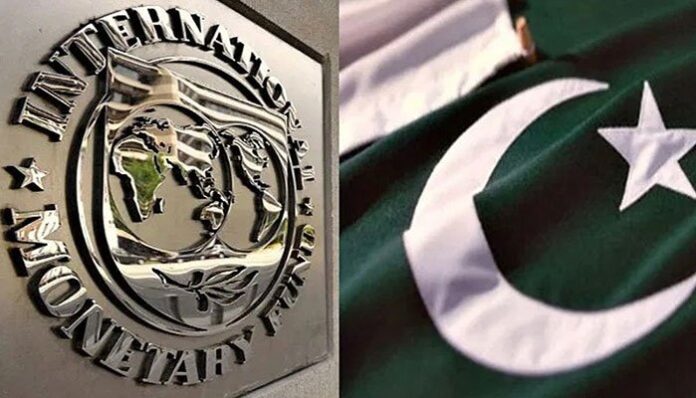A nearly $4.5 billion hole has surfaced in Pakistan’s external financing plan and its budget may also overshoot by another Rs1 trillion due to the understatement of debt expenditures, which may become a serious issue during the first review of the International Monetary Fund programme.
Both the problems of about a $4.5 billion financing gap and approximately Rs1 trillion less allocations for interest payments for the fiscal year 2023-24 are the result of unrealistic budgetary estimates, sources in the Ministry of Finance said.
They added that a number of meetings took place during recent days to resolve these issues.
If they remained unaddressed, there might be problems at the time of the first review of the $3 billion IMF programme in November this year.
The sources said that against the budget estimates of over $20 billion, there were concerns that at least $4.4 billion foreign loans might not materialise. This was flagged at the highest level in the finance ministry and after that a series of meetings began between the Economic Affairs Division and the Finance Division to bridge the gap.
The federal budget and the annual external financing plan had become unrealistic within three months of its approval. In June this year, The Express Tribune had pointed out that the interest payments allocations might fall below the requirements.
The government had budgeted $4.5 billion loans from foreign commercial banks and another $1.5 billion by floating the Eurobonds.
The sources said the Ministry of Finance came to the conclusion that given the low credit rating of Pakistan and the global higher interest rates environment, Pakistan would not be able to get nearly $3 billion in non-Chinese commercial loans.
The finance ministry was still hopeful that it would receive a $1 billion Chinese commercial financing and another about $600 million from other sources.
The chances for arranging $1.5 billion by floating bonds were also very minimal, the sources said.
Because of these factors, the government started looking for alternative means for external financing. The other options included increasing disbursements from the multilateral creditors and raising money through privatisation.
Last month, the interim Finance Minister Dr Shamshad Akhtar directed the finance ministry to review the plan in light of the prevailing economic conditions, particularly the estimates of loans to be arranged from non-Chinese foreign commercial banks and sovereign bonds.
She had inquired whether Pakistan would get $4.5 billion in budgeted commercial loans and the Eurobonds. The sources said that the Economic Affairs Division had been asked to explore the possibility of increasing disbursements from the multilateral and the bilateral creditors.
The government budgeted $6.2 billion inflows from multilateral and the bilateral creditors for this fiscal year but it received only $293 million in July.
Pakistan had received a total $5.1 billion in foreign loans in July. But of the total $5.1 billion, $3 billion was disbursed by Saudi Arabia and the United Arab Emirates (UAE).
The IMF disbursed $1.2 billion.
The programme’s loan disbursements had not yet begun, although the government hoped that these pipelines would start flowing immediately after the approval of the IMF loan.
The sources said that the World Bank might approve a $350 million under the second Resilient Institutions for Sustainable Economy (RISE-II) loan in the first week of October.
Pakistan had requested a $450 million loan but the WB did not agree to it, the sources said. “RISE-2 preparation is under process and is expected in fall. The planned amount for the loan has not been reduced from the amount originally planned at concept stage in May 2021,” a World Bank spokesperson said.
The sources said that the Asian Infrastructure Investment Bank (AIIB) again showed willingness to provide $250 million as co-financing of RISE-II.
Earlier, it had refused to give $250 million until the World Bank gave lending to Pakistan out of the IBRD-window. However, Pakistan was not eligible for the IBRD expensive financing, as its foreign exchange reserves were currently below the requirement of having at least two-and-a-half months equal import cover.
The sources said that due to interim governments across all the federating units, there was slow uptick in the development activities. Because of this reason, the multilateral creditors were unable to release the funds. The disbursements had also been impacted by the central bank’s regulations about third party disbursements, the sources said.
If provinces could show improvements on the ongoing works and the central bank relax its regulations, the disbursements by the multilateral and the bilateral creditors might cross well over $7 billion in this fiscal year, the sources said.
The sources said that the finance ministry was also facing an issue of balancing the books after fresh assessment showed that the cost of interest payments might cross well over Rs8 trillion as against the budgeted figure of Rs7.3 trillion.
They said that the government had estimated the interest payments on the assumption of 18% interest rate.
At average 22% interest cost, the debt servicing estimate was understated by Rs1 trillion for this fiscal year.
The share of the floating-interest debt in the domestic debt was roughly 65%, which meant that at the current rate, the interest payments would go up by Rs1 trillion, the sources added.
As a result, the projected federal budget deficit of Rs7.5 trillion might shoot over Rs8.5 trillion even if all the other estimates remained constant, the sources said.
The Express Tribune had reported in June that nearly two-third of the domestic debt was maturing next year and would be financed at new interest rates.
Due to lower than budgeted foreign loans disbursement, the cost of budget deficit financing entirely shifted to the domestic sources.
The budget had been made on the assumption of 64% domestic financing and over one-third foreign financing. In its July report, the IMF has projected the cost of interest payments at Rs8.6 trillion – Rs1.3 trillion more than the annual budgeted figures.




